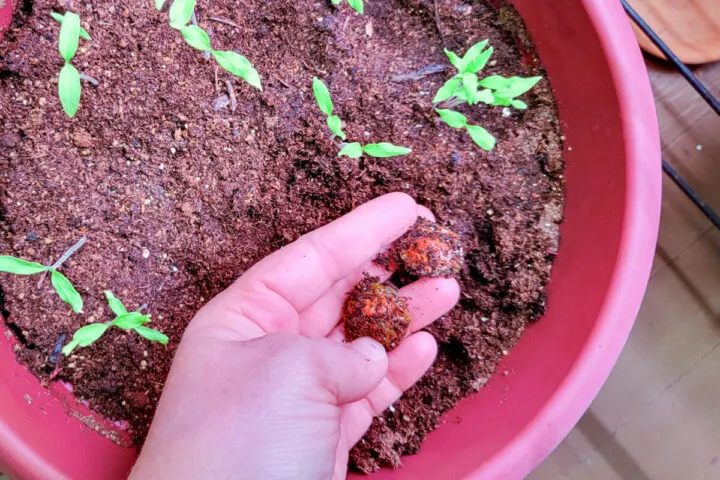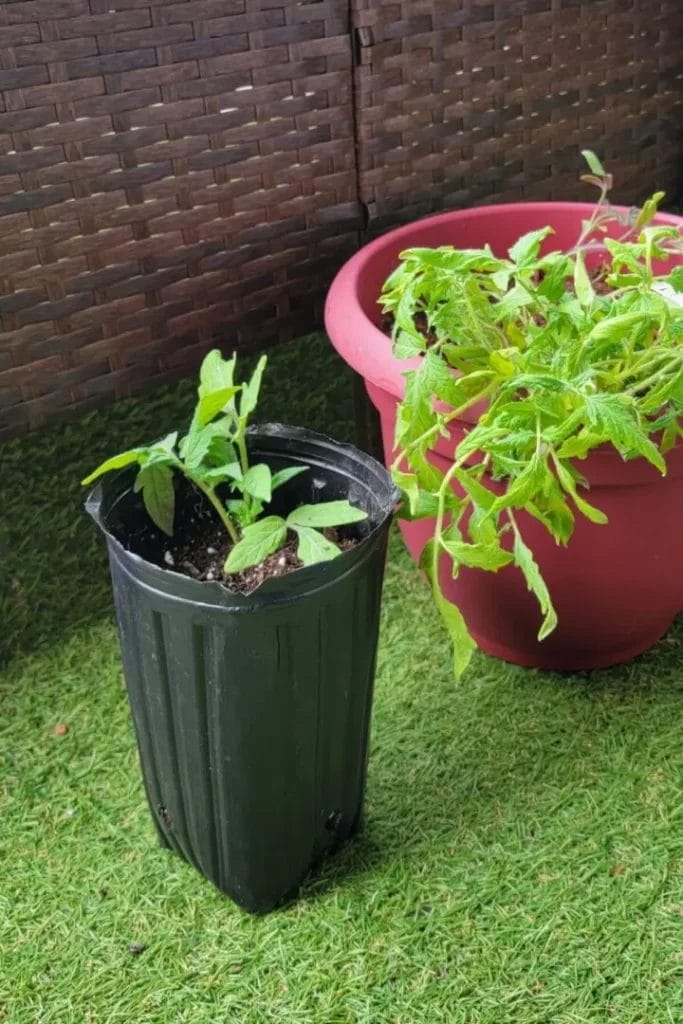The Surprising Results From My "Tomato Slice Planting" Experiment
In my recent gardening experiment, I planted slices of different tomato varieties directly into soil to see if they’d sprout. To my surprise, within just a couple of weeks, tiny seedlings began to push through the earth, each type exhibiting unique growth patterns. This method, which initially seemed a bit unconventional, turned out not only to be effective but also offered insights into the resilience and potential of these plants. However, it wasn’t without its challenges, such as managing moisture levels to prevent mold. I’ll be sharing more about the specific outcomes and practical tips I gathered, which could transform how we think about propagating tomatoes.
Experiment Setup and Process
To set up the tomato slice planting experiment, I selected ripe Roma, Beefsteak, and cherry tomatoes. Carefully slicing them into half-inch thick pieces, I prepared pots filled with a well-draining soil mix. Ensuring each piece was embedded just below the surface, I fostered a conducive growing environment by maintaining the soil’s moisture without overwatering.
I kept the pots in a humid, warm location to simulate a mini greenhouse effect. This setup was essential to prevent the slices from drying out or developing mold prematurely.
Additionally, I labeled each pot clearly to track the performance of different tomato types. This action set the stage for accurate evaluation of their germination efficacy, aiming to optimize conditions for successful seedling sprouting.
Growth Observations and Success

After meticulously setting up the experiment, I observed the growth of tomato seedlings from the planted slices. The results were quite enlightening and underscored the potential of this unconventional method. Here’s what stood out:
- Vibrant Emergence: About two weeks in, sprouting commenced. The Beefsteak slices were particularly robust, with multiple green shoots piercing through the soil, vibrant against the dark earth.
- Diverse Growth Patterns: Each tomato type displayed unique growth traits. Cherry tomatoes took slightly longer but eventually caught up, showcasing a resilient nature.
- Thriving Seedlings: By the fourth week, the seedlings had developed true leaves, indicating a successful progression from slice to sapling, ready for the next growth phase.
The experiment’s success was compelling, revealing an effective method for cultivating tomatoes from slices.
Challenges and Practical Tips
While the tomato slice planting experiment showed promising results, several challenges arose that require practical solutions.
To begin with, the unexpected mold growth on some slices demanded immediate attention. I found that reducing watering frequency slightly, while ensuring the soil remained lightly moist, mitigated this issue.
Next, the variation in sprouting times, especially the delayed emergence in cherry tomatoes, highlighted the need for patience and a tailored approach to different tomato types. I suggest labeling the pots based on tomato variety to manage expectations and care routines accurately.
Lastly, considering the hybrid nature of grocery store tomatoes, I recommend experimenting with heirloom varieties, which might offer more consistent results and robust seedlings.
Benefits and Implementation Steps
How can we effectively implement the tomato slice planting method to reap its many benefits? The process I’ve refined through experimentation is straightforward yet requires precision to guarantee success. Here’s how you can master it:
- Select the Right Tomato: Choose a ripe, organic tomato to guarantee high seed viability. Slice it about 1/4 inch thick to expose numerous seeds.
- Prepare the Soil: Use a rich, well-draining potting mix. Lay the tomato slices flat on the soil and lightly cover them with more soil.
- Maintain Ideal Conditions: Keep the soil consistently moist and place the pot in a warm location with plenty of indirect sunlight.
Follow these steps, and you’ll cultivate robust seedlings ready for a flourishing garden.
Community and Environmental Impact
Implementing the tomato slice planting method not only bolsters community engagement but also greatly promotes environmental sustainability. Through this experiment, I’ve observed a significant reduction in waste, as each slice potentially becomes a new plant, minimizing the need for purchasing seeds and using plastic packaging. This approach encourages local food production, which reduces the carbon footprint associated with transporting food items.
| Impact Area | Description | Key Benefit |
|---|---|---|
| Resource Efficiency | Uses entire tomato, including seeds. | Reduces waste |
| Community Engagement | Involves community in sustainable practices. | Strengthens community ties |
| Biodiversity | Encourages the growth of diverse tomato types. | Enhances local ecosystems |
| Education | Teaches sustainable gardening techniques. | Increases ecological awareness |
| Carbon Footprint | Reduces transport needs for food. | Lowers greenhouse emissions |
This table encapsulates the multifaceted benefits that the tomato slice planting method introduces, highlighting its profound potential impact on both community and environment.
Conclusion

Wrapping up my ‘Tomato Slice Planting‘ experiment, I’ve truly learned that not all that glitters is gold—sometimes, it’s even better! Adopting this unique method not only brought forth a lush tapestry of tomato seedlings but also carved a path toward sustainable gardening.
Sharing this journey has sparked local interest, proving that small seeds can lead to big changes. Let’s keep the ball rolling and continue to nurture our communities and the environment with innovative, green thumbs!







